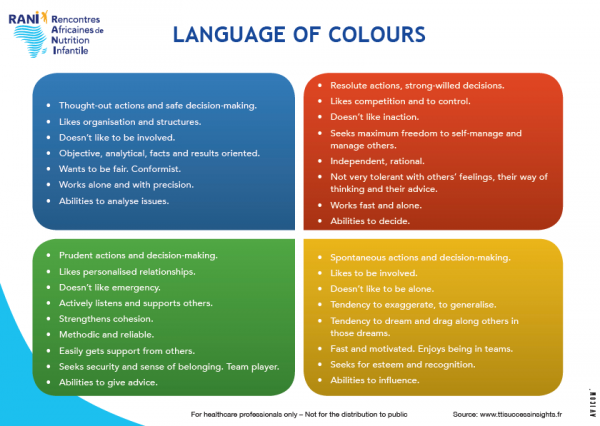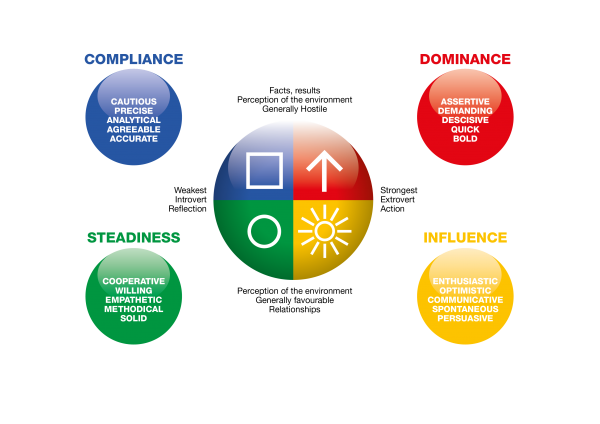In terms of communication, some people tend to apply the golden rule, often derived from their upbringing, ‘We should treat others as we would like to be treated ourselves’. To understand communication better, this maxim can be replaced with another idea, ‘We should treat others as they need to be treated’.
In other words, in a given situation, people do not all react in the same way. Everyone has their own vision of the world along with their own expectations and needs. Everyone has their own way of perceiving and confronting a situation, behaving and communicating in an individual manner. These differences can lead to poor interactions, be the source of misunderstanding and sometimes even conflict.
To know oneself better and to understand others is the first step towards taking into account the needs of the other person. This in turn will lead to more harmonious and effective communication.
How to achieve effective communication
When it comes to addressing the mother (or father), to communicate a diagnosis and its prescription, it is necessary to choose the right approach, to adapt words and attitude so these seem reassuring under circumstances that can often be very stressful, such as a baby’s health problem, and ensure that the message is understood.
The four quadrant behavioural model ‘The colours of DISC’ (an acronym for Dominance [associated with the colour red], Influence [yellow], Steadiness [green] and Compliance [blue] – see figure 1) is based on the early 20th century work of William Moulton Marston, an American psychologist. It provides a key to understanding and decoding human behaviour, and in doing so, gives useful insights into better control and adapting communication to suit the interlocutor.
Essentially a behavioural model (that is, it does not deal with the identity or the values of the person), DISC defines for each person a behavioural profile composed of four colours. These correspond to four types of preferential behaviours, connected to needs and motor emotions. The ‘DISC model’ is a simple approach that makes it possible to understand others, to adapt to their needs and to adopt effective communication.
The perception of environment
Behaviours and the way of communicating them are based on the person’s vision of their environment (seen as rather favourable or rather hostile) and their perception of their ability to act within this environment.
People with a ‘Red Dominance’ profile are focused on results and action and enjoy challenges. Energetic, factual and tenacious, they are direct, and can sometimes be impatient, directive or authoritarian. Parents with a ‘very red’ profile will wait for someone to talk to them directly, to clearly explain the actions to be taken straightforwardly and will want to be assured of the rapid effectiveness of the recommended solution.
People with a ‘Yellow Influence’ profile look for a relationship with others, interact and need recognition. Optimistic and enthusiastic, they like to convince, are sociable, sometimes appearing talkative or superficial. Parents with a ‘very yellow’ profile will wait to build a warm relationship with the doctor that allows them to express themselves and will appreciate being valued in their parentin role.
People with a ‘Green Steadiness’ profile value harmony in relationships, look for consistency in life and enjoy being helpful. Calm and methodical, attentive and reliable, they are uncomfortable with rapid change and conflict and can sometimes seem forgotten. Parents with a ‘very green’ profile need time to build trust, cannot bear to be hurried and require prolonged listening to be reassured.
People with a ‘Blue Compliance’ profile look for rules and a recognized framework to make sure they are not wrong and to make the right choices. This encourages them to think for a long time before acting, to conduct structured reasoning and rigorous analysis with a strong ability to go into detail, they sometimes appearing picky, rigid or excessively cautious. Parents with a ‘very blue’ profile need details to understand, precision and rational proof to be reassured because they could be afraid of a mistake being made and/or making a mistake themselves.
Decoding these behaviours and responding to the needs expressed is easier once a person recognises their own profile so they can better determine their behaviour. These are the two tips that allow anyone to adjust their communication and interactions: providing an additional asset, after the medical diagnosis, to strengthen the confidence of the parents while reassuring them and to guarantee a good compliance with the prescription and advice.

Infography: the language of colors
References
William Martson: ‘Emotion of normal people’ (1928). Le modèle DISC Insights: https://www.ttisuccessinsights.fr
BA19-485

